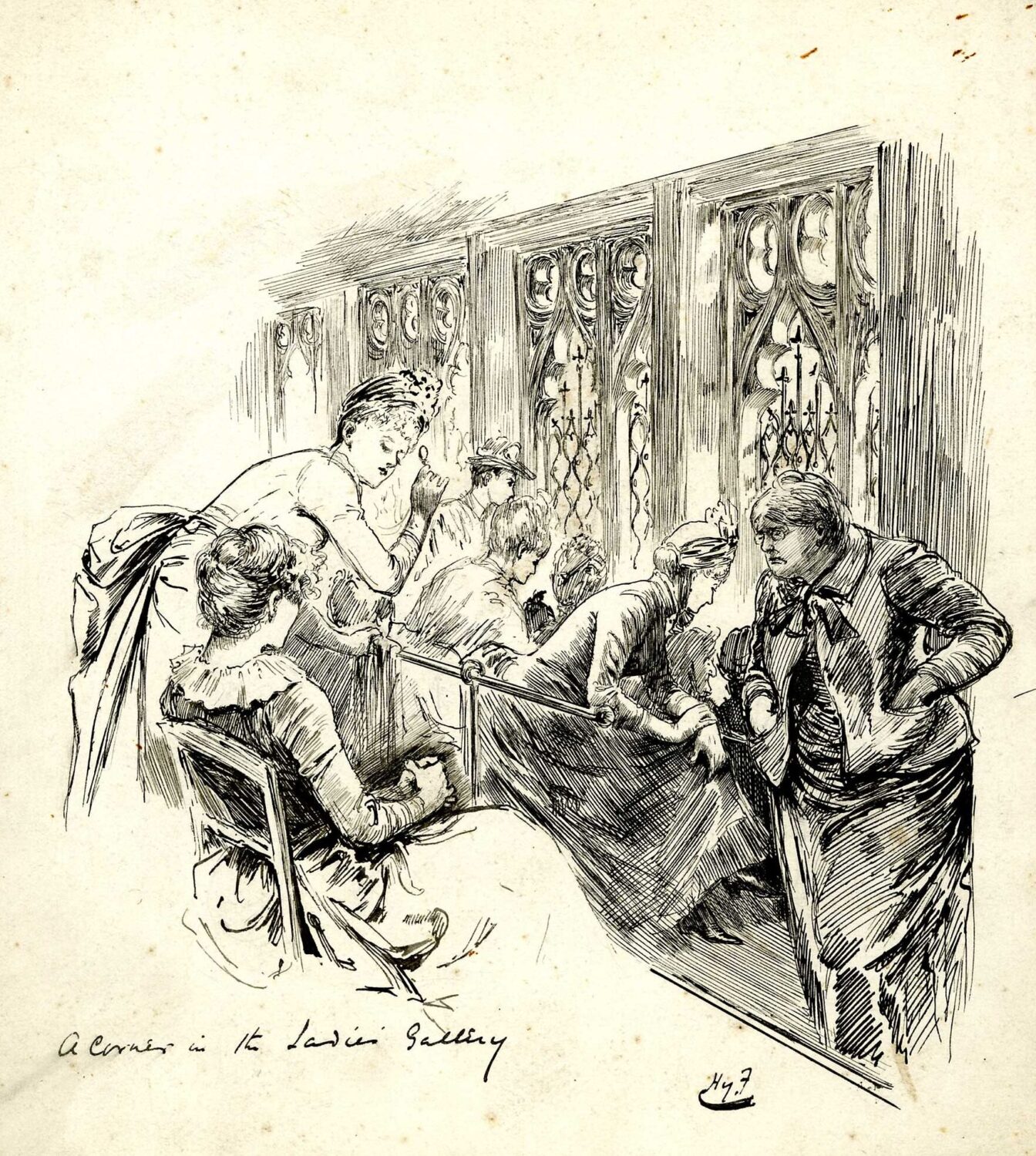

Mari Takayanagi
Senior Archivist
UK Parliamentary Archives
On census night in 1911, suffragette Emily Wilding Davison hid overnight in a broom cupboard in the Palace of Westminster. This was so she could claim to be resident in the Parliament building on the census form and stake a claim to the same political rights as men. And yet, an examination of the census records shows that as well as Davison, there were 65 women resident in Parliament that night. These were housekeeping and kitchen staff in the House of Lords and House of Commons, as well as wives, daughters and servants living in official residences such as Speaker’s House.
As this demonstrates, women have always been present in the UK Parliament: living there, working there, watching debates, giving evidence to committees, lobbying and campaigning. However, this is largely invisible in the building, amid the much more prominent grand narratives of monarchs and male politicians through political history. It is sometimes assumed that there were no women in the House of Commons until Nancy Astor arrived as the first woman MP to take her seat in 1919; and no women in the House of Lords until the first four women life peers arrived in 1958. Only relatively recently has it been realised that there is a much longer women’s history in the building, which can help shed light on the political culture and practices within.
This paper will consider the Palace of Westminster as a space for women from a historical perspective, c. 1818-1960. Firstly, using work by Gleadle (2009), Richardson (2013) and current research by Amy Galvin, it will examine women as politically engaged visitors, watching Parliamentary debates through a ventilator in the attic space above the House of Commons before 1834, and from a cramped and stuffy Ladies’ Gallery thereafter into the early 20th century. Secondly, it will build on the work of Eustance (1997), Puwar (2004), Galvin and others to analyse the physical activities of women lobbyists and campaigners in Parliamentary spaces in the period before the First World War. This included giving evidence to select committees, presenting petitions, sending deputations, and militant suffragette action.
Thirdly, this paper will use work by Brookes (1968), Harrison (1986) and others to consider the experiences of the early women MPs in the House of Commons, the hostile culture and traditions they faced, their restricted office spaces, and how this shaped their political activity, as well as the arrival of the first women Peers in 1958. Finally, it will re-discover the women staff who lived and worked in the building, from cleaning and catering staff to the first women Clerks and Hansard reporters, without whom Parliament could not have operated. The paper will make particular reference to the holdings of the Parliamentary Archives, who hold 500 years of Parliamentary records on 8.1 km of shelving in the Victoria Tower.